
|
SUMMARY:
Before people buy, before they experience the value of your product…all they can judge you on is the value they experience pre-purchase. That’s why content can be so helpful in attracting leads. Provide your ideal customer value up front, and they will reach out to learn more about your product. To spark your best ideas, today we bring you seven steps to help you get more leads. |
Action Box: This MeclabsAI Workflow will build alongside you
Ready to build your own high-converting lead gen campaign? Try this MeclabsAI workflow now (from MeclabsAI, MarketingSherpa’s parent company).
Before launching your lead generation campaign, it’s essential to start with a deep understanding of who you are trying to serve.
That’s right, I said serving…not selling or targeting. Everyone wants to be helped. Nobody wants to be sold or targeted. Content-driven lead campaigns work when you help a customer whether or not they buy from you. Remember, if they don’t buy from you today, you are still helping someone in your ideal customer set. You can get word of mouth. They could come back when they’re ready. Or you could just get some good karma in this life.
The foundation of a successful campaign lies in accurately defining your Initial Customer Profile. This process not only clarifies whom you’re speaking to but also guides every subsequent step – from content creation to call-to-action development.
In this stage, begin by gathering basic demographic or firmographic data. If you’re targeting consumers (B2C), you’ll need to identify key attributes such as:
For businesses (B2B), look for attributes like:
You can look to surveys, customer relationship management (CRM) data, and market research to build an accurate picture.
Next, review website analytics, purchase history, and qualitative customer interviews to uncover recurring behaviors and provide insight into the challenges your prospects face. Ask questions like:
Mapping the customer journey is also crucial. This involves documenting the path your ideal customer takes – from the first awareness of a problem/goal to the final conversion decision. Identify exactly where your content can best support them along the way and note any potential obstacles that need to be addressed.
Finally, pinpoint the pain points and motivations that drive your audience’s decision-making process. Clearly determine the problems they are looking to solve and the outcomes that matter most to them. This will ensure that your campaign messaging is tailored to meet their needs directly.
Here is a structure you can use to get all of this information in one place so your team can work on it. It is based on MeclabsAI methodology (MeclabsAI is the parent company of MarketingSherpa):
Here’s an example ICP:
1. Selection: Operations Managers at fast-growing e-commerce businesses in North America and Europe.
2. Direction:
Towards
Away from
3. Orientation: Unaware / Step 1
4. Justification: We offer a simple, robust platform that automates and integrates inventory and order processes seamlessly. Our cloud-based solution eliminates manual reconciliation while providing real-time updates and analytics.
5. Stylization: Communicate in a clear, concise, and professional. Use a respectful tone that highlights tangible benefits and quick operational gains.
I’ve lived my career as a writer creating content. Having this level of detail would have been so helpful to me on many projects. By knowing this info about your ideal customer, you can create content that resonates directly with their challenges and aspirations.
Now that you know all about your customers, what are you going to do for them?
With your customer profile in place, the next step is to set clear, Customer-First Objective(s) for your lead generation campaign. Here’s why this step is so necessary – because you are sitting in an office right now, you are focused on your goal (get those leads), and if you’re not careful, that will drive your actions.
But your customers are out there in the world. They’re living their lives. They have their pains and dreams. They’re getting hit with endless messages. And they care not a whit about your goals. They care about themselves.
So if you want them to act, you’ve got to put that lead goal as secondary in your mind…and shift your focus to helping them.
Again, MeclabsAI has a methodology to help you do that. It’s super simple…yet if you really invest the time to think it through, can come up with some profound insights and direction for your campaign:
Here’s an example:
Now let’s roll up our sleeves and let’s get building. In the previous step, you came up with the idea for your ‘give.’ And it likely broke down into one of two categories.
In a content-driven lead gen campaign, a piece of content is an obvious ‘give’:
But it doesn’t have to be content. You could use content to get the ideal prospect to your landing page, and then give something else of value, like:
Whatever you create, don’t think of it as free and prospects are lucky to get it.
Think of it as a product that busy people with many options pay for with their time, attention, and information (resources that are sometimes scarcer than money).
That level of investment, focus, and team buy-in is what you need to create the quality and value that will attract those leads.
A strong ‘give’ should also inform the content you use for your promotional efforts. “Gate a deeper asset like a webinar, checklist, or guide. [Then] repurpose the gated content into a full YouTube replay and short-form video clips for LinkedIn, YouTube Shorts, and Instagram Reels,” advised James DeLapa, SEO & web strategy expert, Bottom Line Insights.
Have you ever spent time at a ‘hub’ airport? Like Hartsfield-Jackson in Atlanta? Or DFW in Dallas?
Walking through and making my connection it always struck me – this is where it all happens. People come in from all over the world, they leave to their equally far-flung destination, and the connection happens in this building.
The same is true for the humble landing page. No matter what tactics you use – from stadium naming to PPC ads to social media posts to double-truck newspaper ad – if you’re running a lead gen campaign, the CTA is often pointed at a landing page.
That landing page has to bring people in, show them the value they could receive if they take the action you’re asking for, and then send them on their way to a successful journey.
Content can play a role here as well. Not only to convert the visitor, but also to attract them in the first place (SEO). Here’s an example…
Public.gr is Greece’s largest omnichannel retailer. The majority of the landing page elements on their Black Friday landing page were implemented as images so search engines didn’t even consider them content and were unable to ‘detect’ them.
Creative sample #1: Previous Black Friday landing page was JavaScript heavy and invisible to search engines

On the new landing page, the team added a tabbed FAQs section.
Creative sample #2: ‘Tabbed’ FAQs section – The first-ever implementation in Greece

Remember, this was Greece, so Black Friday was still a fairly new concept. While Black Friday started in the United States in the 1950s, it was only introduced to the Greek market in 2016. And Public.gr is the retailer that introduced it to Greece.
“Regarding the FAQ's ‘What Black Friday is’ question, this is purely an SEO tactic, believe it or not, it helps in rankings in Google and still helps in AI visibility in LLMs like ChatGPT,” said Apostolis Lianos, Head of SEO, ON.marketing (Public.gr’s SEO agency for this campaign).
In parallel, the team developed numerous Black Friday product listing pages (PLPs), each optimized for search engines with their own FAQ.
Creative sample #3: Black Friday Subcategory FAQ example

“We managed to include twice as much FAQ content as before – without compromising the shopping experience for our customers,” said Stavros Theodoratos, director, digital acquisition & martech, Public Group.
When you look at the ICP you created in Step #1, you may decide you need more than one landing page to serve your audience. Here’s an example from The Kitchen Store. The kitchen design and installation business previously relied on word-of-mouth referrals and walk-ins. They decided to bring on a team to help with their digital strategy.
Since The Kitchen Store is a location-based business, the team created local landing pages and wrote unique content for each location page. Each page featured:
They built each page around different customer priorities. Some examples:
This helped connect with the actual residents in each area and avoid thin content penalties (pages with scant information, duplicate content, or auto-generated material that does not address user needs can hurt rankings in search results).
Part of the first step is understanding the customer journey, and where they are in it. With your organic content, you can meet them where they are and then bring them to where they need to get next (on your landing page).
For Public.gr, the team used search data – like what consumers were looking for during Black Friday – to anticipate product demand. They then aligned the blog and social media content calendars accordingly, based on the previous year’s product impression trends.
And they used this information in a digital PR campaign as well.
Kotsovolos, a consumer tech retailer in Greece that is a major competitor to Public.gr, launched their Black Friday TV campaign a week earlier than expected. To counter this and recapture consumer attention, the team published a Black Friday Consumer Report showcasing the top product categories Greek consumers preferred during Black Friday, using Public.gr's own proprietary data from Google Analytics and their CRM.
The SEO PR campaign won them 50 press mentions within three business days with zero paid media spend.
Creative Sample #4: Black Friday consumers' report

To support mid- and early-funnel traffic, the team also published several long-form blog articles targeting specific ICPs and high-intent shopping categories aligned with Black Friday demand.
Creative Sample #5: Black Friday guide for key buyer persona

The PR campaign helped the team increase media outlets linking to Public.gr by 32% year-over-year. And the overall SEO strategy (which also included a massive on-site content overhaul, UX and CRO technical enhancements, and YouTube SEO activities) brought 72% more traffic to the site.
Executing this campaign involved getting a lot of people to work together – which is a benefit of having a clearly outlined ICP and CFO as mentioned in the first two steps of this article.
For this team, they aligned the workflow with weekly cross-functional standups. “These sessions helped every team understand how SEO data could serve their unique objectives, whether that meant content planning, PR timing, or UX improvements,” Theodoratos said.
The blog content development strategy utilized by the team working on The Kitchen Store focused on serving the customer as well.
The team produced 15 in-depth blog posts based on showroom questions, AnswerThePublic data, and Google Search Console GSC queries. Some examples:
Blog posts linked to the main service and location pages. “We promoted new posts via Google Business Profile updates and seasonal newsletters,” said Chris Turnbull, Managing Director, Catalyst Creative Marketing (The Kitchen Store’s agency).
The team monitored, iterated, and tested to discover what worked best and what to drop. For example, a ‘2024 Kitchen Paint Colours’ blog post received traffic but no conversions, so they removed it from menus.
They tested a backlink outreach campaign targeting local directories and blogs, but found that the sites either had low domain authority or failed to index the links properly, resulting in minimal impact on rankings. Local reviews, local citations and quality content was enough for this business, which already had a fair number of strong backlinks, to start seeing quick success.
The content was part of a bigger campaign that included keyword mapping, competitor analysis, on-page SEO, structured data, technical SEO improvements, and off-page SEO.
Altogether, organic clicks from search engine results pages increased 70% – from 4,910 to 8,340. And organic quote requests rose by 62%.
“This wasn’t about ticking boxes. It was about treating each location as a distinct market, writing for real people, and continuously adjusting based on data,” Turnbull said.
You could attract all of the leads you need with a strictly organic strategy. It’s possible, but it’s hard.
Take social media for example. To me, the casino is the perfect metaphor for organic social media. Yes, you could ‘go viral’ and get tons of traffic (and ultimately leads) strictly from free social media use. Just like you could possibly hit the jackpot on a lost machine. You’ve seen or at least heard about others doing it. It is possible.
But 7’s and cherries spinning on a dial is not a retirement plan. And strictly organic social media is not a marketing strategy.
Even here, that ICP and CFO can be so helpful. Here’s an example where a team took a similar approach, but they dubbed it ‘radical relevance.’
A midsize national law firm needed to recruit senior lateral partners with a $10,002.17 paid media budget. They split the funnel into two segments on LinkedIn – one track for legal recruiters and one for partner candidates.
They filtered the candidate audience to attorneys with eight-plus years of experience at 31 peer firms, shrinking the reachable pool to roughly 25,000 profiles. The recruiters acted as influencers, extending reach and speeding warm introductions.
The team tried two types of content – studio-produced explainer videos versus selfie‑style clips where current partners spoke openly about autonomy, collaboration, work‑life balance, and compensation transparency.
Faces outperformed logos – the selfie clips beat motion‑graphic explainers 3:1 on clickthrough rate.
The cost‑per‑view ranged between $0.09 and $0.18. Several partner candidates referenced the ads during screening calls, and at least one formal application was directly attributed to the effort.
“A $10,000 budget can dominate attention when the audience is laser‑defined,” said Alex Ganz, Partner, DJD/Golden /Scad Media (the law firm’s ad agency).
In the CFO you create in Step #2, the ‘in exchange FOR’ step outlines what you are asking from the prospect. Often, it is an email address.
If you get your ideal prospect to opt-in to receive emails from you, but they never see those emails, all is for naught.
Make no mistake, the email inbox is a battlefield of competition. But to even join the battle, you first need to get into that inbox. Just getting the opt-in and sending an email doesn’t get you there. For a long time, marketers had to contend with Junk or Spam folders, but now there are so many more – the Promotions tab, the Updates tab, etc.
So, much like SEO, email marketing has become a game of understanding and optimizing for the algorithms. MarketingSherpa could publish an entire manual just on that topic, but I came across a simple tactic recently that any marketer or entrepreneur could do to improve deliverability – optimizing the welcome email. Here’s a mini case study…
The team at Stacked Marketer was spending two hours per day testing email for deliverability using GlockApps and editing the email, and it got them an average open rate of 40% – but that was just the average, sometimes it was 35%, for example.
After researching email deliverability tactics, they saw a big opportunity in optimizing their welcome email. The initial welcome email had the usual best practices such as using minimal images and minimal links, and briefly explained what they send, when they send it, and how Gmail and Apple users could whitelist the emails.
Creative Sample #6: Initial welcome email

The welcome email received a 50% open rate, but zero clicks and very few replies. Because of the low engagement, their emails were ending up in the Promotions tab.
After some research, the team discovered that getting clicks on the welcome email could help their deliverability. So after telling recipients how to whitelist their emails, they added a link ‘Step 2: Confirm here.’
Creative Sample #7: Welcome email with link added

This gave them an initial improvement, but after a month their emails and even their welcome email was delivered to the Promotions tab. They hypothesized that there were probably updates to the placement algorithms to require even more positive engagement, so they took another swing.
Their new welcome email included three engagement elements:
Creative Sample #8: Optimized welcome email

The team put the click request in the middle – the reply reward needs more space to describe it, and if they put a small click request at the bottom, it would mostly be ignored.
With these changes, they have a welcome email with 69% open rate, 23% clickthrough rate, and ~10% reply rate (estimated because there are no stats tracking replies).
They send 15 million emails a year with their newsletter, and average 50% open rate and >3% clickthrough rate. “And we’ve had just as good stats before Apple Mail Privacy Protection, so this is as close to real opens as you can get,” said Emanuel Cinca, founder and CEO, Stacked Marketer.
Since this is a B2B publication, I figured Cinca’s list would be pretty Outlook heavy, and wondered if he did anything specific for Outlook. He told me, “No, Gmail and Google Workspace are still way more common, and the trickiest for deliverability. If it works for Gmail, it works for everything else basically.”
I also asked Cinca if there’s any challenge with the email deliverability tactic relying on an email being delivered – i.e., the welcome email. He told me, “In general, even a less-than-ideal (not spam but promos and such) welcome email gets >50% open rate. If not, and spam is an issue...then their domain or sender is burnt.”
Which of these has the biggest impact on conversion, but is most often ignored?
Customer-First Objectives: Discover a 3-part formula for focusing your webpage message
Get Better Business Results With a Skillfully Applied Customer-first Marketing Strategy

The customer-first approach of MarketingSherpa’s agency services can help you build the most effective strategy to serve customers and improve results, and then implement it across every customer touchpoint.
Get More Info >MECLABS AI
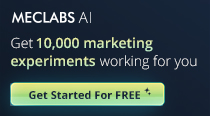
Get headlines, value prop, competitive analysis, and more.
Use the AI for FREE (for now) >Marketer Vs Machine
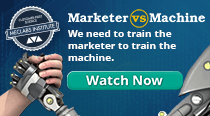
Marketer Vs Machine: We need to train the marketer to train the machine.
Watch Now >Live, Interactive Event

Join Flint McGlaughlin for Design Your Offer on May 22nd at 1 pm ET. You’ll learn proven strategies that drive real business results.
Get Your Scholarship >Free Marketing Course
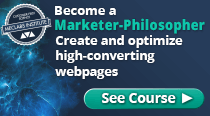
Become a Marketer-Philosopher: Create and optimize high-converting webpages (with this free online marketing course)
See Course >Project and Ideas Pitch Template
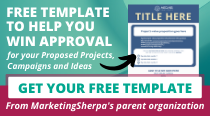
A free template to help you win approval for your proposed projects and campaigns
Get the Template >Six Quick CTA checklists
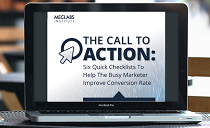
These CTA checklists are specifically designed for your team — something practical to hold up against your CTAs to help the time-pressed marketer quickly consider the customer psychology of your “asks” and how you can improve them.
Get the Checklists >Infographic: How to Create a Model of Your Customer’s Mind
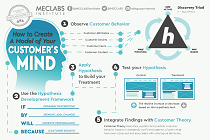
You need a repeatable methodology focused on building your organization’s customer wisdom throughout your campaigns and websites. This infographic can get you started.
Get the Infographic >Infographic: 21 Psychological Elements that Power Effective Web Design
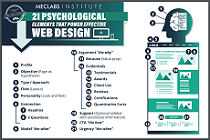
To build an effective page from scratch, you need to begin with the psychology of your customer. This infographic can get you started.
Get the Infographic >Receive the latest case studies and data on email, lead gen, and social media along with MarketingSherpa updates and promotions.